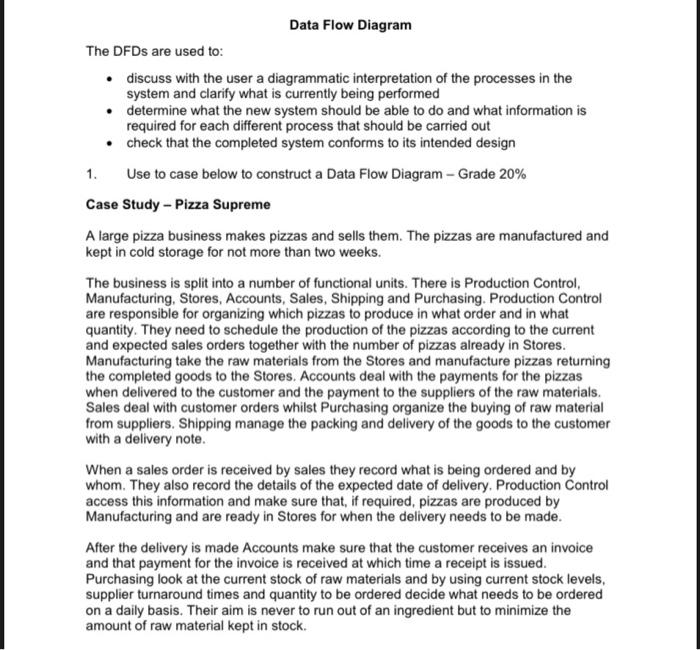Data Flow Diagram The DFDs are used to: discuss with the user a diagrammatic interpretation of the processes in the system and clarify what is currently being performed determine what the new system should be able to do and what information is required for each different process that should be carried out check that the completed system conforms to its intended design 1. Use to case below to construct a Data Flow Diagram - Grade 20% Case Study - Pizza Supreme A large pizza business makes pizzas and sells them. The pizzas are manufactured and kept in cold storage for not more than two weeks. The business is split into a number of functional units. There is Production Control, Manufacturing, Stores, Accounts, Sales, Shipping and Purchasing. Production Control are responsible for organizing which pizzas to produce in what order and in what quantity. They need to schedule the production of the pizzas according to the current and expected sales orders together with the number of pizzas already in Stores. Manufacturing take the raw materials from the Stores and manufacture pizzas returning the completed goods to the Stores. Accounts deal with the payments for the pizzas when delivered to the customer and the payment to the suppliers of the raw materials. Sales deal with customer orders whilst Purchasing organize the buying of raw material from suppliers. Shipping manage the packing and delivery of the goods to the customer with a delivery note. When a sales order is received by sales they record what is being ordered and by whom. They also record the details of the expected date of delivery, Production Control access this information and make sure that, if required, pizzas are produced by Manufacturing and are ready in Stores for when the delivery needs to be made. After the delivery is made Accounts make sure that the customer receives an invoice and that payment for the invoice is received at which time a receipt is issued. Purchasing look at the current stock of raw materials and by using current stock levels, supplier turnaround times and quantity to be ordered decide what needs to be ordered on a daily basis. Their aim is never to run out of an ingredient but to minimize the amount of raw material kept in stock







